Doctor Web’s May 2020 overview of malware detected on mobile devices
[% DEFAULT FILE_REVIEW = ''; NAME_SOME_ARRAY_IN_MACROSNAME = [ { box => "Overview" }, { box => "Threat of the month" }, { box => "Statistics" }, { box => "Threats on Google Play" }, { box => "Other threats" } ] #FILE_REVIEW = 'https://st.drweb.com/static/new-www/news/2020/DrWeb_review_mobile_may_2020.pdf' %] [% BLOCK global.tpl_blueprint.content %]
June 19, 2020
In May, the number of threats detected on Android devices increased by 3.35% compared to April. The number of identified malicious programs increased by 3.75%, riskware by 8.77%, and adware by 1.62%. With this, the number of unwanted software found on Android devices decreased by 1.77%.
At the end of May Doctor Web warned about the
New modifications of the
PRINCIPAL TRENDS IN MAY
- Minor increase in the number of threats discovered on Android devices
- Discovery of new threats on Google Play
Threat of the month
In May, Doctor Web reported on the discovery of the fake mobile version of the Valorant game. In reality, it was nothing but a modification of the
To get full access to the game, the trojan invites its target victims to complete several tasks found on the website of one of the affiliate services. For example, the trojan can offer to install and run other games. Scammers receive a financial reward for each successfully finished task, while victims receive nothing.
According to statistics collected by Dr.Web for Android
-
Android.RemoteCode .256.origin -
Android.RemoteCode .6122 - Malicious applications that download and execute arbitrary code. Depending on their modification, they can load various websites, open web links, click on advertisement banners, subscribe users to premium services and perform other actions.
-
Android.HiddenAds .530.origin -
Android.HiddenAds .1994 - Trojans designed to display obnoxious ads. They are distributed disguised as popular applications. In some cases, they can be installed in the system directory by other malware.
-
Android.DownLoader .906.origin - A trojan that downloads other malware and unwanted software. It can be hidden inside seemingly harmless apps found on Google Play or malicious websites.
-
Program.FreeAndroidSpy .1.origin -
Program.SpyPhone .4.origin - Software that monitors Android user activity and may serve as a tool for cyber espionage. These apps can track device locations, collect information from SMS and social media messages, copy documents, photo and video, spy on phone calls, etc.
- Program.FakeAntiVirus.2.origin
- Detection name for adware programs that imitate anti-virus software. These apps inform users of non-existing threats, mislead them and demand they purchase the full version of the software.
-
Program.CreditSpy .2 - Detection name for programs designed to assign credit ratings to users based on their personal data. These applications upload SMS, contact information from phonebooks, call history and other information to the remote server.
- Program.RiskMarket.1.origin
- An app store that contains trojanized software and recommends users install it.
-
Tool.SilentInstaller .6.origin -
Tool.SilentInstaller .11.origin -
Tool.SilentInstaller .13.origin -
Tool.VirtualApk .1.origin - Riskware platforms that allow applications to launch APK files without installation. They create a virtual runtime environment that does not affect the main operating system.
-
Tool.Rooter .3 - A utility designed to obtain root privileges on Android devices. Users, cybercriminals and malware may all use it.
Program modules incorporated into Android applications and designed to display obnoxious ads on Android devices. Depending on their family and modifications, they can display full screen ads and block other apps’ windows, show various notifications, create shortcuts and load websites.
- Adware.Adpush.36.origin
- Adware.Adpush.6547
- Adware.Mobby.5.origin
- Adware.Myteam.2.origin
- Adware.Toofan.1.origin
Threats on Google Play
Last month, Doctor Web malware analysts discovered several new
Our specialists have also discovered the
Trojans of the
Upon launch, these malicious apps concealed their icon from the apps list on the main screen of the Android operating system and began displaying full screen adware banners that interfere with the normal usage of infected devices.
New adware modules dubbed Adware.AdSpam.4, Adware.AdSpam.5 and Adware.AdSpam.6 have also been spread as harmless apps, such as games and image collections. Similar to the
Other threats
A trojan exploiting the SARS-CoV-2 pandemic, was among the threats spread in May. This malware, dubbed
Cybercrooks continued to bombard users with various banking malware attacks. For example, Vietnamese users attacked by
To protect your Android device from malware and unwanted programs, we recommend installing Dr.Web for Android.

Your Android needs protection.
Use Dr.Web
- The first Russian anti-virus for Android
- Over 140 million downloads—just from Google Play
- Available free of charge for users of Dr.Web home products



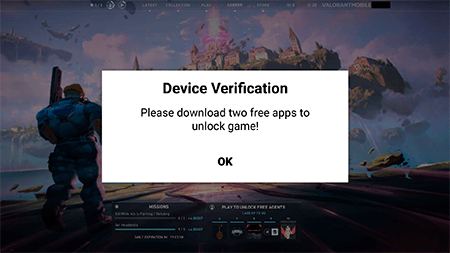
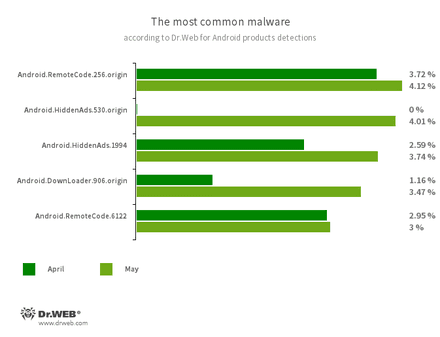
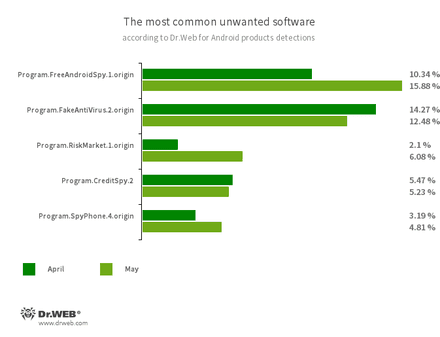
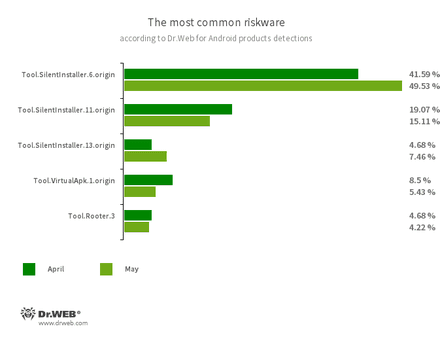
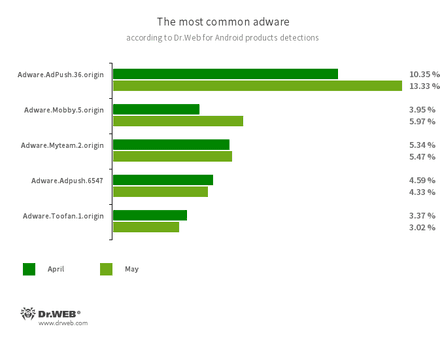


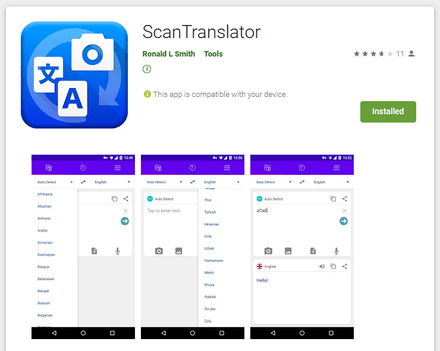
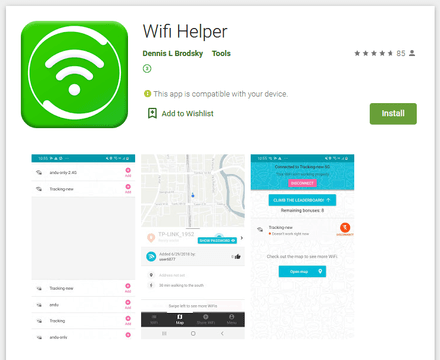

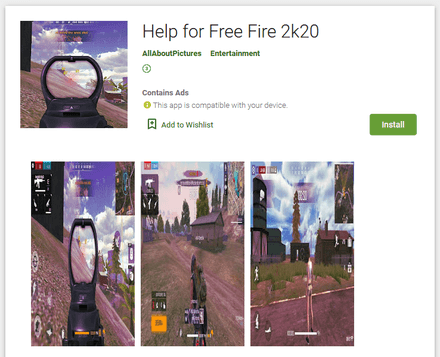




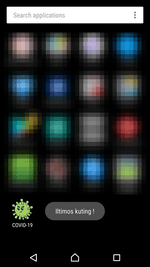

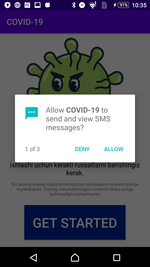
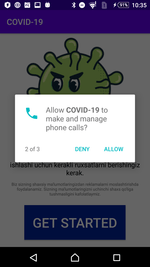
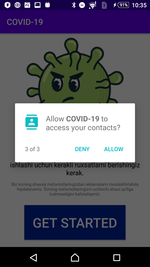
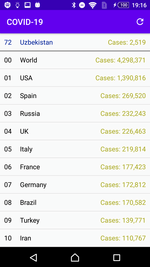
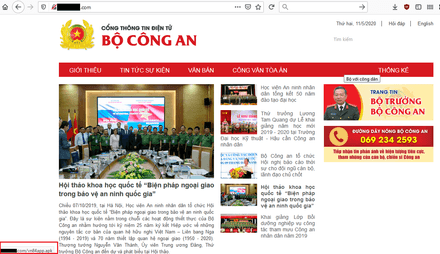

![[You Tube]](https://st.drweb.com/static/new-www/social/youtube.png)
![[Twitter]](https://st.drweb.com/static/new-www/social/twitter.png)
![[Facebook]](https://st.drweb.com/static/new-www/social/facebook.png)
![[Instagram]](https://st.drweb.com/static/new-www/social/instagram.png)
![[Spiceworks]](https://st.drweb.com/static/new-www/social/spiceworks.png)